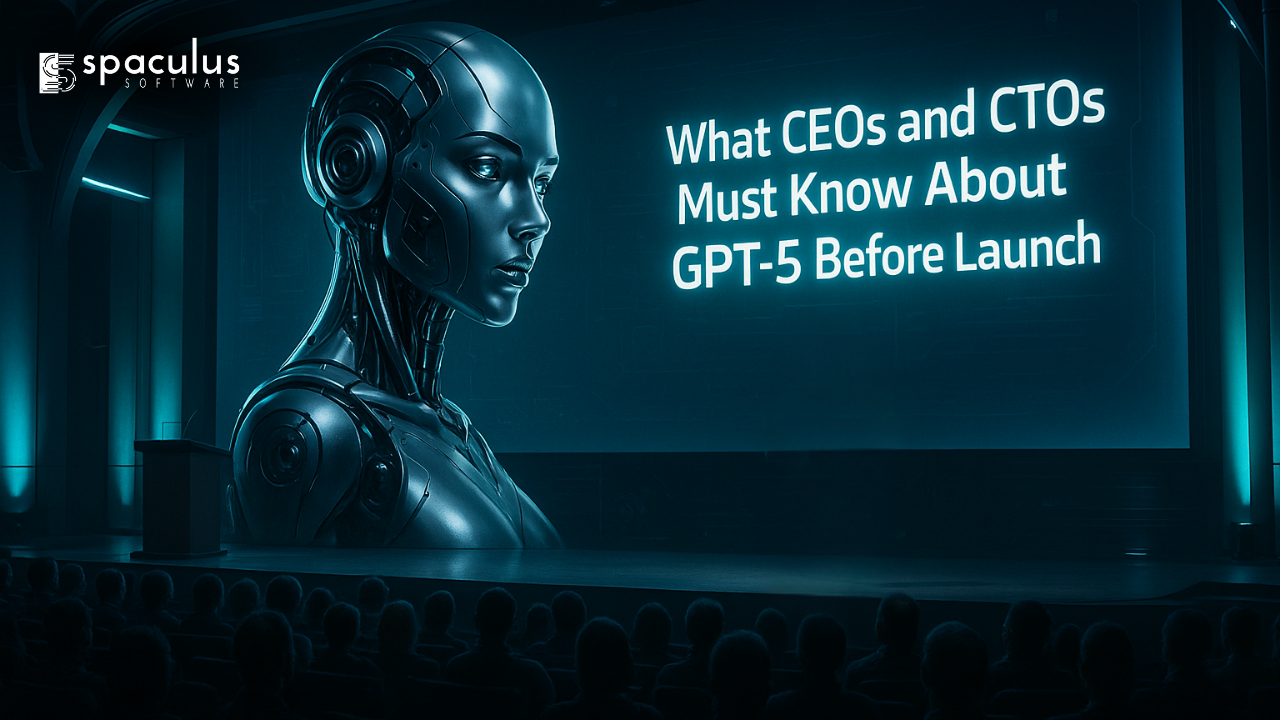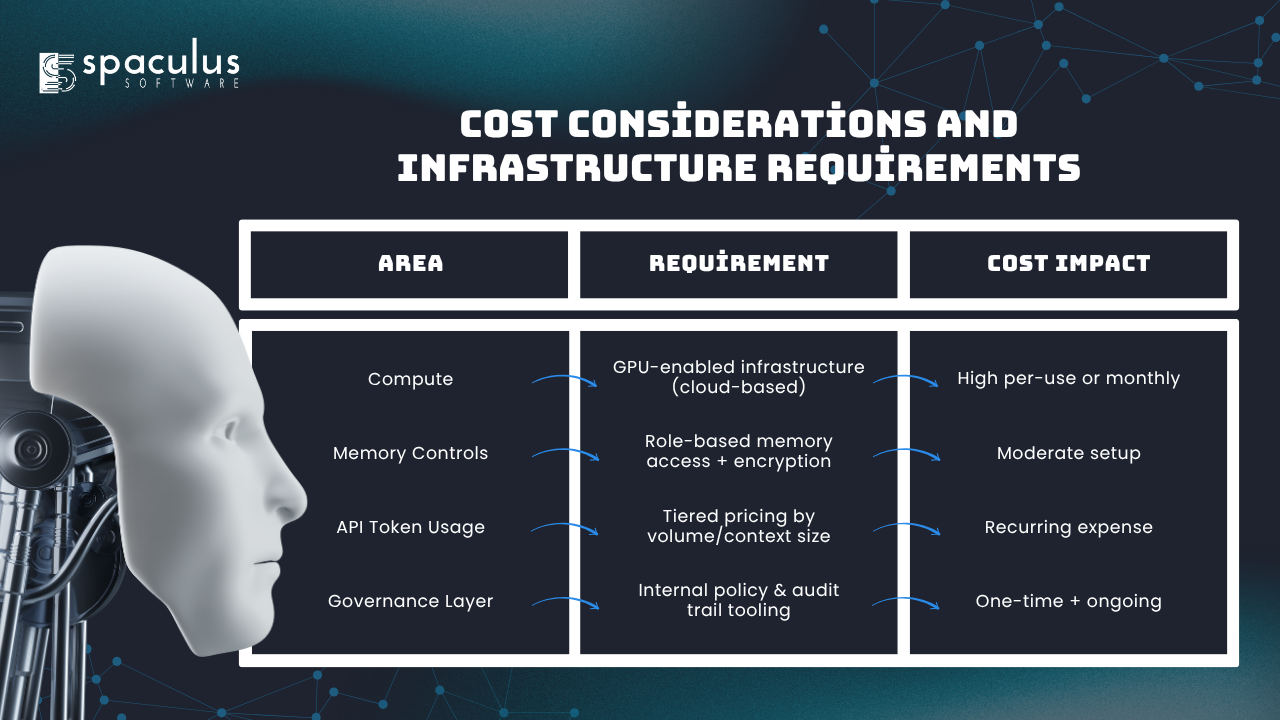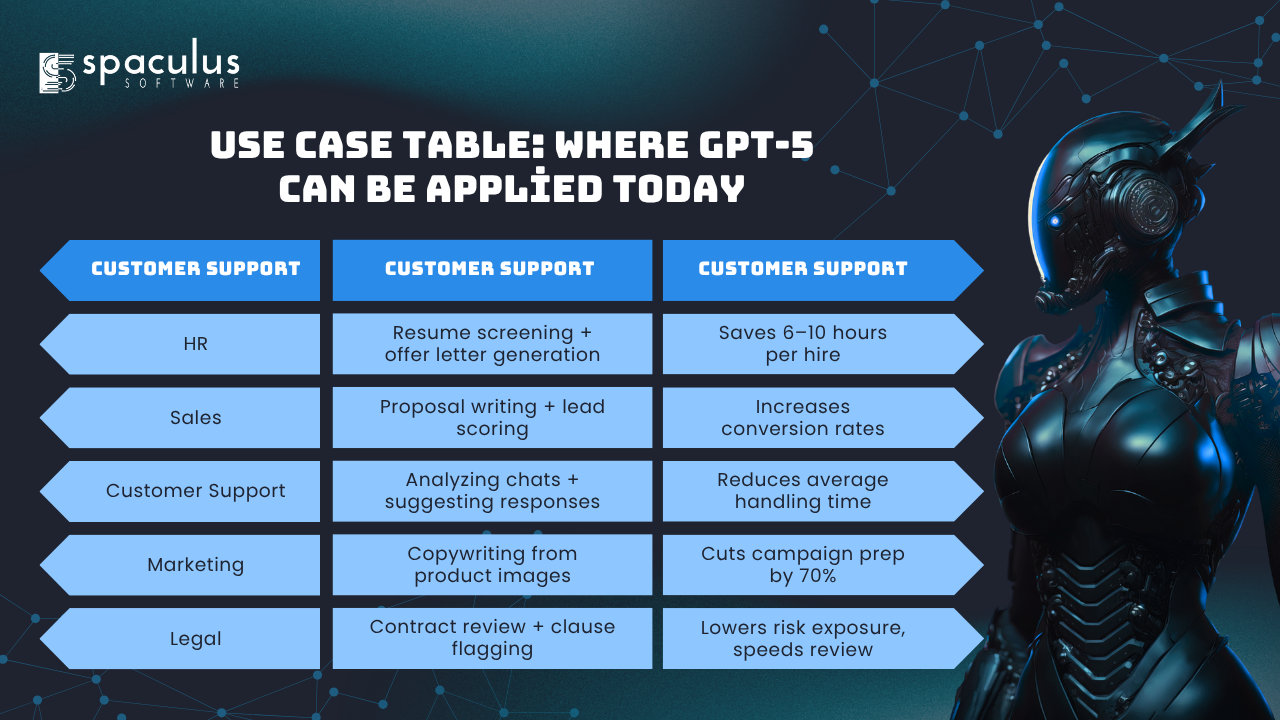
The launch of GPT-5 is more than a software update.
It’s a business turning point.
Built with memory, multimodal input, and autonomous execution, GPT-5 marks a new class of AI.
Not just smarter responses—strategic collaboration.
For CEOs and CTOs, this means rethinking automation, data governance, decision cycles, and risk.
Because this isn’t about testing another tool.
It’s about preparing your infrastructure for machine-driven thinking at scale.
GPT-5 is expected to release by late 2025.
Unlike previous models, it’s not just a better writer or code generator.
It’s designed to act, remember, and operate across multiple content types.
In short:
This AI can understand text, interpret visuals, summarize audio, and perform tasks independently.
For enterprises, it’s not just a productivity booster.
It’s an operating layer with memory and decision logic.
This changes the responsibility at the executive level.
Because once AI remembers, acts, and reasons—your tech stack becomes a risk surface.
OpenAI has confirmed that GPT-5 will offer:
Each of these isn’t just a model update.
They affect policy, compliance, infrastructure, and accountability.
Let’s break them down.
Previous models like GPT-3 and GPT-4 required separate tools to analyze visuals or audio.
GPT-5 is unified.
You can feed it a product image, a customer email, and an internal dashboard recording—
It can process and connect them all.
In practical terms:
This reduces human dependency in content workflows.
It also increases reliance on data quality.
GPT-5 is not just smarter—it remembers.
This means your AI will know:
It doesn’t require re-uploading instructions or context.
It’s context-aware—over time.
But this introduces data risk.
What should it remember?
Who can view, edit, or delete that memory?
For CTOs, memory is no longer just a feature—it’s a governance issue.
GPT-5 is expected to take autonomous actions via plugins or API.
This includes:
This makes GPT-5 more of a “digital teammate” than a chatbot.
But businesses must plan for oversight:
Without this, the risk of silent errors rises dramatically.
The move from responsive to proactive AI means a shift in enterprise structure.
AI becomes infrastructure—not just assistance.
Every department may soon have AI memory, AI execution, and AI feedback loops.
This demands a leadership response.
It’s no longer about adopting AI.
It’s about aligning AI to long-term workflows.
Running GPT-5 isn’t free—or lightweight.
Key infrastructure costs include:
| Area | Requirement | Cost Impact |
| Compute | GPU-enabled infrastructure (cloud-based) | High per-use or monthly |
| Memory Controls | Role-based memory access + encryption | Moderate setup |
| API Token Usage | Tiered pricing by volume/context size | Recurring expense |
| Governance Layer | Internal policy & audit trail tooling | One-time + ongoing |

Executives must prepare budgets not just for usage,
But for secure, scalable usage.
Privacy, Governance, and Responsible Deployment
Persistent memory and agentic tasks require safeguards.
Recommended governance practices:
CEOs should treat GPT-5 as a processor, not a vendor.
CTOs must architect for transparency—not just speed.
| Department | Example Use Case | Impact |
| HR | Resume screening + offer letter generation | Saves 6–10 hours per hire |
| Sales | Proposal writing + lead scoring | Increases conversion rates |
| Customer Support | Analyzing chats + suggesting responses | Reduces average handling time |
| Marketing | Copywriting from product images | Cuts campaign prep by 70% |
| Legal | Contract review + clause flagging | Lowers risk exposure, speeds review |

Model Comparison Table: GPT-5 vs GPT-4 vs Claude 3 vs Gemini 1.5
| Feature | GPT-5 | GPT-4o | Claude 3 Opus | Gemini 1.5 Ultra |
| Max Context Tokens | 1M+ (rumored) | 128k | 200k | 1M |
| Memory Support | Persistent | None | Temporary | Temporary |
| Modalities | Text/Image/Audio/Video | Text/Image | Text/Image | Text/Image/Video |
| Autonomy Level | High | Low | Medium | Medium |
| Release Date | 2025 (est.) | May 2024 | Mar 2024 | Feb 2024 |
Top Questions CTOs Must Answer Before Implementation
These aren’t hypothetical.
They’re operational.
And they define the difference between productive adoption and exposure.
How Spaculus Software Helps Teams Deploy GPT-5 Securely
Spaculus Software works with enterprise teams to design GPT-5 systems from the ground up.
We ensure implementation isn’t just fast—but safe.
Our offerings:

Whether you’re preparing your first GPT-5 pilot or scaling company-wide,
We bring the experience to match this leap in AI.
GPT-5 is not a wait-and-watch technology.
It’s a readiness test.
For teams with strategy and infrastructure, it will widen their advantage.
For others, it will reveal blind spots—fast.
CEOs and CTOs must act now:
Not to chase hype—but to define guardrails, build trust, and guide usage.
Because in the age of memory-powered, autonomous AI—
What you build before launch is what will separate leaders from laggards.